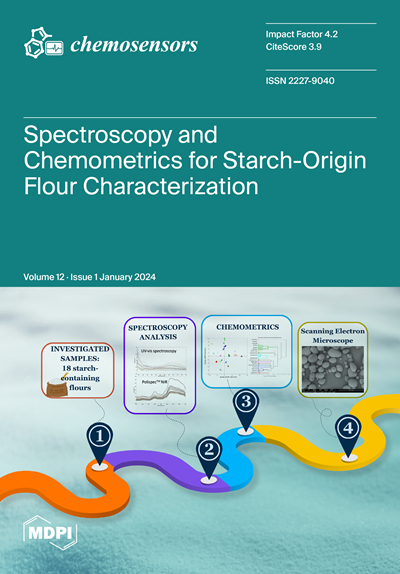Temperature Modulation of MOS Sensors for Enhanced Detection of Volatile Organic Compounds
IF 3.7
3区 工程技术
Q2 CHEMISTRY, ANALYTICAL
引用次数: 0
Abstract
Disease diagnosis through biological fluids, particularly exhaled breath analysis, has gained increasing importance. Volatile organic compounds (VOCs) present in exhaled breath offer diagnostic potential as they reflect altered and disease-specific metabolic pathways. While gas chromatography–mass spectrometry (GC–MS) has been traditionally used for VOCs detection, electronic noses have emerged as a promising alternative for disease screening. Metal oxide semiconductor (MOS) sensors play an essential role in these devices due to their simplicity and cost-effectiveness. However, their limited specificity and sensitivity pose challenges for accurate diagnosis at lower VOCs concentrations, typical of exhaled breath. To address specificity and sensitivity issues, temperature modulation (TM) has been proposed in this paper, introducing a custom-developed electronic nose based on multiple and heterogeneous gas sensors located within an analysis chamber. Four different TM patterns (i.e., square, sine, triangular, and a combination of square and triangular) were applied to the gas sensors to test their response to three different analytes at three distinct concentrations. Data were analyzed by extracting meaningful features from the sensor raw data, and dimensionality reduction using principal component analysis (PCA) was performed. The results demonstrated distinct clusters for each experimental condition, indicating successful discrimination of analytes and concentrations. In addition, an analysis of which set of sensors and modulation pattern yielded the best results was performed. In particular, the most promising TM pattern proved to be the square and triangular combination, with optimal discrimination accuracy between both concentrations and analytes. One specific sensor, namely, TGS2600 from Figaro USA, Inc., provided the best performance. While preliminary results highlighted the potential of TM to improve the sensitivity of gas sensors in electronic nose devices, paving the way for further advancements in the field of exhaled breath analysis.用于挥发性有机化合物增强检测的MOS传感器温度调制
通过生物体液,特别是呼气分析进行疾病诊断,已变得越来越重要。呼气中存在的挥发性有机化合物(VOCs)具有诊断潜力,因为它们反映了改变的和特定于疾病的代谢途径。虽然气相色谱-质谱(GC-MS)传统上用于挥发性有机化合物的检测,但电子鼻已成为一种有前途的疾病筛查替代方法。金属氧化物半导体(MOS)传感器由于其简单性和成本效益在这些器件中起着至关重要的作用。然而,它们有限的特异性和敏感性对低挥发性有机化合物浓度(典型的呼出气体)的准确诊断提出了挑战。为了解决特异性和敏感性问题,本文提出了温度调制(TM),介绍了一种基于位于分析室内的多个异构气体传感器的定制开发的电子鼻。将四种不同的TM模式(即正方形、正弦、三角形以及正方形和三角形的组合)应用于气体传感器,以测试它们对三种不同浓度下三种不同分析物的响应。通过从传感器原始数据中提取有意义的特征来分析数据,并使用主成分分析(PCA)进行降维。结果显示了不同的集群在每个实验条件下,表明成功的分析物和浓度的区分。此外,还分析了哪一组传感器和调制方式产生了最好的结果。特别是,最具前景的TM模式被证明是正方形和三角形组合,在浓度和分析物之间具有最佳的识别精度。一个特定的传感器,即来自Figaro USA, Inc.的TGS2600,提供了最好的性能。虽然初步结果强调了TM在提高电子鼻设备中气体传感器灵敏度方面的潜力,为呼气分析领域的进一步发展铺平了道路。
本文章由计算机程序翻译,如有差异,请以英文原文为准。
求助全文
约1分钟内获得全文
求助全文
来源期刊

Chemosensors
Chemistry-Analytical Chemistry
CiteScore
5.00
自引率
9.50%
发文量
450
审稿时长
11 weeks
期刊介绍:
Chemosensors (ISSN 2227-9040; CODEN: CHEMO9) is an international, scientific, open access journal on the science and technology of chemical sensors published quarterly online by MDPI.The journal is indexed in Scopus, SCIE (Web of Science), CAPlus / SciFinder, Inspec, Engineering Village and other databases.
 求助内容:
求助内容: 应助结果提醒方式:
应助结果提醒方式:


